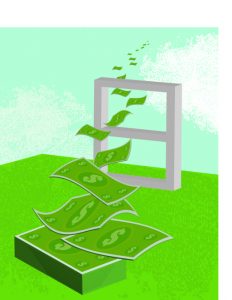
Controlling building temperatures and improving employee productivity with commercial HVAC systems could save your business some money!
As summer comes to an end, ensuring your building’s temperature settings are under control become even more important. Keeping your employees as comfortable as possible, no matter how hot or cold the weather gets outside, will improve their productivity. Today’s business world is hyper competitive, and you want to be sure that your workers are giving it their all.
The Correlation Between Temperature and Productivity
When employees get too hot or too cold, they can’t concentrate. Consequently, productivity decreases. Distracted or uncomfortable employees will make more mistakes, which will slow down their forward momentum because they’ll be spending more time fixing any errors that they notice. As established by studies, the best building temperature is around 71.6 degrees Fahrenheit. A study conducted by Cornell University also discovered that when the temperature in the building is too high or too low, your business could be paying higher labor costs by 10%.
Setting the Best Temperature
When you are trying to determine the best temperature for your building, consider the impact on productivity and building environment it will have. The Occupational Safety and Health Administration (OSHA) suggests that indoor temperatures should range between 68 and 76 degrees Fahrenheit. However, as noted above, temperatures in the low 70s are ideal, because at these mild temperatures, employee productivity is at its highest. Another factor to keep in mind is humidity, as humidity can make a room feel hotter than it truly is. When setting humidity levels, make sure they are between 20 and 60%.
Temperature Costs
The connection between building temperature and employee productivity could be affecting your business’s bottom line in ways that you might not expect. Sometimes, jackets and extra layers might not be enough; if employees get too cold, they will start bringing in personal heating units to work. How cold it is inside the building is an important consideration, especially as the start of the fall season approaches. The weather turns crisper, colder, and rainier as fall begins. When employees bring their own heaters it can interfere with the operation of your building’s commercial HVAC systems. For instance, the system controls may detect the wrong levels of heat in a room because of the heating units.
Fall flu season is also fast approaching. As a result, sick days may increase. Higher temperatures inside the building could encourage the spread of bacteria, mold, and viruses, all of which can be quickly circulated through the entire building. When your employees get sick, they can’t work. And when they can’t work, productivity plummets.
Considerations for Commercial HVAC Systems
As always, making sure your commercial HVAC systems are optimized can control building temperatures. Here are some considerations to address:
- Necessary repairs: Unresponsive controls, leaks, clogs, and breakages all need fixing.
- Problems with system layout: Updates, upgrades, and retrofits may be required, especially if certain areas of your building demand more heating and cooling than others.
- Preventative maintenance: Preventative maintenance can go a long way in guaranteeing your system equipment works as efficiently as possible.
Crockett Facilities Can Help!
Crockett Facilities Services, Inc. (CFSI) is committed to helping building owners, property managers, engineers, and facility professionals lower their operating expenses through HVAC preventive maintenance. We can develop a cost-effective, customized preventive maintenance plan for your commercial building that will provide you with peace of mind, improved comfort, and energy savings.
To learn more about the importance of HVAC Preventive Maintenance, please contact us at 202.600.2787 or sales@crockett-facilities.com. Our PM contract customers receive priority service with 24/7 emergency service in Maryland, Virginia and Washington, DC.
